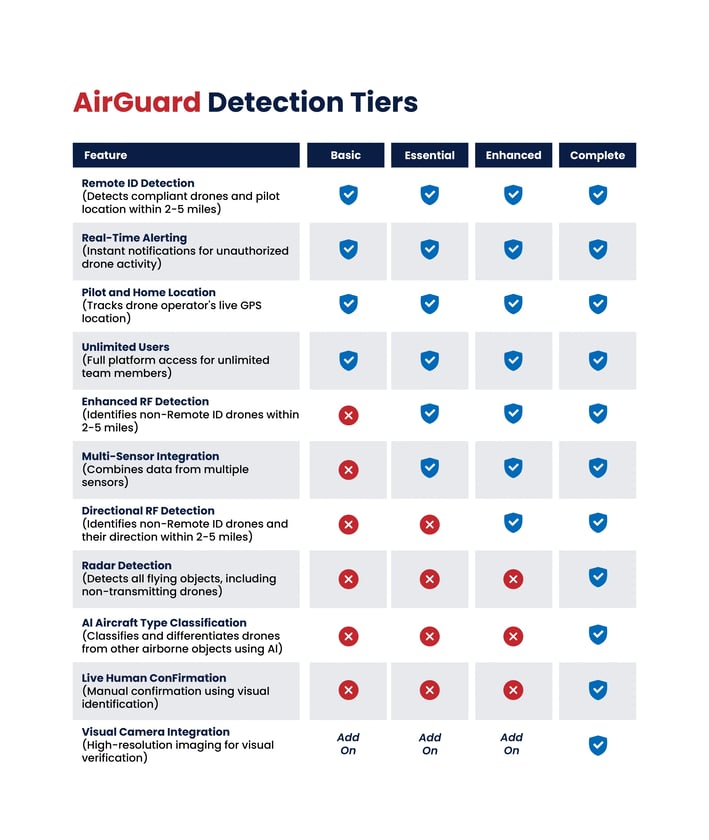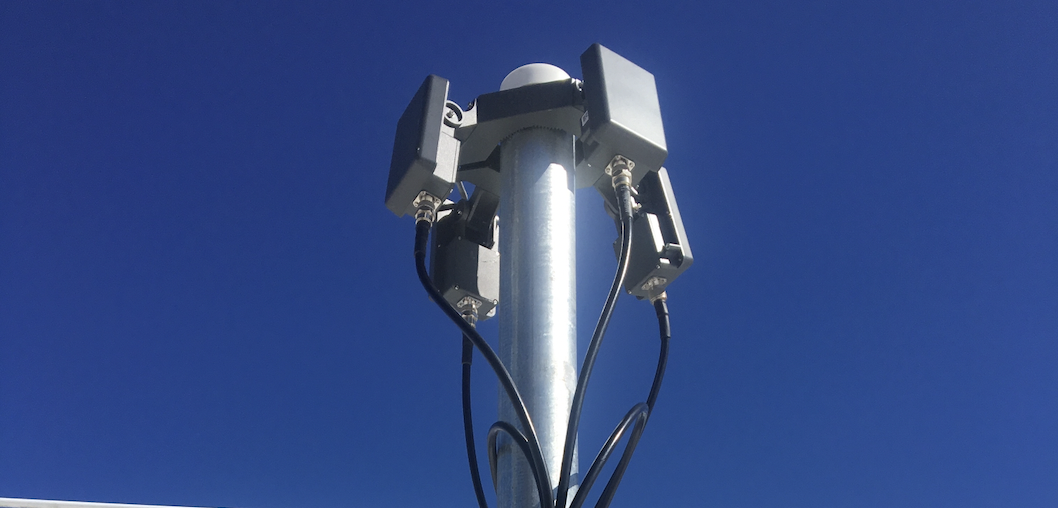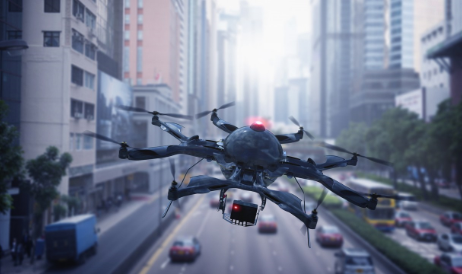Introduction: What is RF Drone Detection?
At AirSight, we believe that transparency is the foundation of a strong partnership. This guide provides a clear, high-level overview of the real-world factors that influence the performance of any passive RF-based drone detection system, including our own AirGuard detection tiers.
By understanding these principles, we can set accurate expectations and design the most effective security solutions for our customers.
How Does RF Drone Detection Work?
In simple terms, our RF sensors are advanced "listeners". They are constantly scanning the airwaves for the specific radio frequency signals that drones use to communicate with their pilots/remote controllers (RC).
When a known signal is identified, the system can:
-
Classify the drone.
-
Geolocate both the drone and the pilot (a feature available starting with our Basic tier).
The effectiveness of this "listening" process is subject to the laws of physics and the vast differences in drone manufacturing.
What Factors Affect RF Detection Performance?
The performance of any RF system is fundamentally influenced by the environment in which it operates.
Environmental Factors: The Laws of Physics in Practice
-
Line of Sight (LOS): RF signals travel in a straight line. For the best performance, our sensors need a clear, unobstructed view of the sky. The clearer the line of sight, the greater the detection range and reliability.
-
Obstructions: Every object between the sensor and the drone can absorb, reflect, or weaken the signal. A dense concrete building, for example, will block far more signal than a glass window or a sparse tree line.
-
Environmental Clutter: The operational environment has a major impact.
-
Rural/Open Areas: Fewer obstructions and less RF interference allow for maximum detection ranges.
-
Urban/Industrial Areas: A high density of buildings and structures creates significant obstructions and signal reflections (multipath), which can reduce detection distances.
-
The RF "Noise Floor"
Think of the RF environment as a room. A quiet room (low noise floor) makes it easy to hear a whisper from across the way. A room full of people talking (high noise floor) means you can only hear someone shouting right next to you.
High-noise RF environments, filled with signals from Wi-Fi routers, cell towers, and other radio equipment, can reduce the range at which a drone can be detected.
Why Are Some Drones Harder to Detect?
Beyond the environment, the drone's own hardware and software play a critical role in how easily it can be detected.
Signal Transmission Power
-
Leading manufacturers like DJI and Autel tend to use higher-quality, higher-power transmitters.
-
This is like a person shouting versus whispering—the stronger signal travels farther and can better penetrate minor obstructions, resulting in superior detection ranges.
-
Many other brands use lower-power components, which naturally limits detection distance.
Advanced Transmission Techniques
-
Some manufacturers, particularly SkyDio and other US-based companies, employ advanced techniques like rapid frequency hopping across a wide band.
-
This presents a challenge for any detection system, as it takes more time for a scanning sensor to lock onto the signal pattern.
-
This can impact the initial speed and maximum range of detection.
The Challenge of Detecting Remote ID (RID) Signals
The FAA's Remote ID (RID) rule is a major step forward for airspace security, but the standard itself introduces variability.
The WiFi vs. Bluetooth Technology Divide: The FAA standard (14 CFR Part 89) allows manufacturers to broadcast RID data using either WiFi or Bluetooth. These technologies have fundamentally different design goals. Bluetooth was designed for short-range communication (like headphones), not long-range broadcasting.
Inherent Range Differences: Our internal testing in ideal, line-of-sight conditions shows a clear performance difference:
-
WiFi-based RID: ~1000 to 1300 meters
-
Bluetooth-based RID: ~800 to 1000 meters
These ranges can be drastically reduced by the environmental factors discussed above.
The "No Minimum Range" Standard: The FAA rule does not mandate a minimum broadcast range for RID. This means manufacturers have little incentive to use more powerful (and more expensive) transmitters.
-
DJI currently uses the most robust RID implementation with WiFi and higher power.
-
In contrast, many other drone makers and all stand-alone RID broadcast modules use lower-power Bluetooth, resulting in significantly shorter detection ranges.
The AirSight Advantage: A Multi-Tiered Partnership
Understanding these challenges is the first step to overcoming them. At AirSight, we use this knowledge to our customers' advantage.
Our systems are engineered and rigorously tested to provide best-in-class performance within these real-world constraints.
-
We champion a multi-tiered security posture, as no single technology is a silver bullet.
-
Most importantly, we treat system deployment as a partnership.
-
Our expert team conducts professional site surveys to analyze your specific environment and strategically place sensors to maximize coverage and mitigate the impact of these inherent limitations.
By being transparent about the technology, we can work together to build the most effective and reliable drone detection solution for your unique operational needs.










